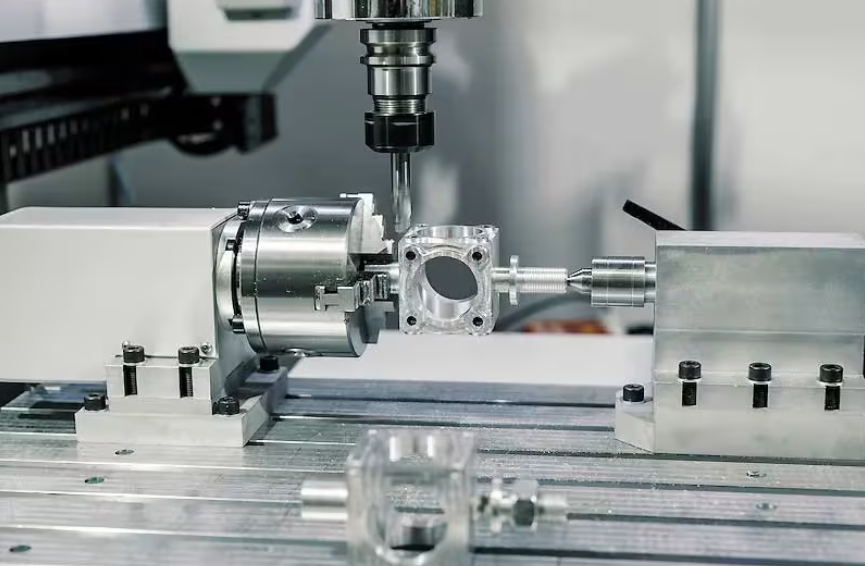Computer Numerical Control (CNC) represents a fundamental paradigm in manufacturing automation, characterized by the programmed control of machining tools through encoded numerical commands. The technology originated from numerical control (NC) systems developed at the Massachusetts Institute of Technology in the 1950s under U.S. Air Force contract, with the first commercial CNC machines appearing in the 1970s following the integration of microprocessor technology.
The core operational principle involves the conversion of computer-aided design (CAD) models into machine-readable G-code instructions, which precisely dictate toolpath trajectories, spindle speeds, and feed rates. Modern CNC systems demonstrate positioning accuracy within 2.5 micrometers for standard machining centers and 0.1 micrometers for ultra-precision applications, as documented in the International Journal of Machine Tools and Manufacture (Vol. 132, 2018).
Industrial CNC implementations utilize several distinct control architectures. Open-loop systems, primarily found in entry-level equipment, employ stepper motors with typical positional accuracy degradation of 0.05mm per 300mm of travel. Closed-loop configurations incorporate rotary encoders with resolution exceeding 0.001 degrees on each axis, as specified in ISO 230-2 testing protocols. The most advanced systems integrate laser interferometer feedback, achieving volumetric compensation for geometric errors below 5 microns across cubic meter work volumes.
Material removal processes dominate CNC applications, with milling operations accounting for approximately 62% of installations according to Gardner Intelligence’s 2022 Machine Tool Survey. Turning centers represent 28% of the market, while multi-axis machining systems have grown to 7% of total units shipped. The remaining 3% consists of specialized applications including electrical discharge machining (EDM) and additive manufacturing hybrids.
Cutting tool dynamics constitute a critical factor in CNC performance. Research from the CIRP Annals (Volume 70/1, 2021) demonstrates that carbide end mills operating at 250 meters/minute surface speed maintain optimal tool life when radial depth of cut remains below 6% of cutter diameter in titanium alloys. This relationship becomes nonlinear when machining hardened steels above 45 HRC, where tool deflection exceeding 15 micrometers precipitates rapid flank wear progression.
Thermal management presents another fundamental challenge in CNC operations. The Journal of Manufacturing Science and Engineering (Vol. 144, No. 3) documents spindle growth of 18-25 micrometers per 10°C temperature rise in typical 15,000 RPM machining centers. Advanced systems compensate through real-time thermal modeling, incorporating data from 8-12 strategically placed thermocouples with 0.1°C resolution. Coolant delivery systems have evolved to provide variable pressure from 20-300 bar, with through-tool implementations reducing cutting zone temperatures by 60-80% compared to flood cooling.
The economic impact of CNC technology manifests in several measurable dimensions. Labor productivity studies conducted by the National Institute of Standards and Technology (NIST Report 8234, 2021) indicate CNC machining centers achieve 4.7 times higher output value per operator-hour compared to conventional manual methods. This productivity gain comes with increased capital intensity, where a standard 3-axis vertical machining center represents an investment of $85,000-$250,000, with 5-axis configurations reaching $450,000-$1.2 million depending on work envelope size and accuracy class.
Software integration has become increasingly sophisticated in modern CNC systems. Computer-aided manufacturing (CAM) packages now generate toolpaths accounting for machine-specific kinematic constraints, with advanced algorithms minimizing air cutting time by 15-30% through optimized path planning. Post-processors translate these generic toolpaths into machine-specific code, handling up to 128 simultaneous axes in complex multi-tasking environments. The emergence of STEP-NC (ISO 14649) represents a significant evolution, enabling direct machining from product manufacturing information without intermediate G-code conversion.
Quality assurance methodologies have adapted to CNC capabilities. In-process probing systems with 1-micron repeatability perform first-article verification in 30-60 seconds, compared to 15-30 minutes for manual inspection. Laser tool setters measure cutter length and diameter within 2 micrometers, automatically updating tool offset registers. These automated measurement cycles have reduced setup times by 40-60% in job shop environments according to SME’s 2022 Manufacturing Technology Trends report.
The technology continues evolving along several research fronts. Machine learning applications now predict tool wear with 85-92% accuracy by analyzing spindle power consumption harmonics, as demonstrated in recent IEEE Transactions on Industrial Informatics publications. Digital twin implementations simulate machining processes with 95% force prediction accuracy before physical cutting begins. Hybrid manufacturing systems combining CNC subtractive methods with directed energy deposition additive processes are achieving near-net-shape accuracies within 0.1mm on complex aerospace components.
Environmental considerations are driving innovations in energy-efficient CNC operation. Regenerative drive systems recover 15-25% of braking energy during axis deceleration. Smart power management reduces idle consumption from 25% to under 10% of peak load through predictive job scheduling. The latest machine tool designs meet ISO 14955-1 energy efficiency standards, with power consumption metrics below 0.15 kWh/cm³ for aluminum machining.
Workforce development requirements reflect the technology’s complexity. The U.S. Bureau of Labor Statistics reports CNC programmer positions require 2-4 years of specialized training, with operators typically needing 6-12 months to achieve proficiency on specific machine configurations. This skills gap has prompted the development of augmented reality training systems that reduce competency development time by 30-40% compared to traditional methods.
Industrial adoption patterns show distinct variation by sector. Automotive manufacturers operate CNC equipment at 85-90% utilization rates with 20-25% annual capital reinvestment. Aerospace applications demand higher precision machines with 50-60% utilization due to longer cycle times on complex components. The medical device sector maintains the tightest tolerances, with 70% of production CNC machines capable of 5-micron or better repeatability.
Standardization efforts continue to shape CNC technology implementation. The ISO 10791 series defines test methods for machining center accuracy, while ISO 13399 establishes uniform tool description protocols. In North America, ASME B5.54-2005 specifies performance evaluation criteria, and in Europe, the VDMA 34160 guideline governs energy efficiency measurement.
Future development trajectories focus on several key areas. The integration of quantum sensors promises to improve position feedback resolution to the nanometer scale. Advances in linear motor technology aim to eliminate mechanical backlash entirely while increasing rapid traverse speeds beyond 60 m/min. Self-optimizing cutting parameter adjustment using real-time process monitoring may reduce machining time by 15-20% while extending tool life.
The fundamental importance of CNC technology in modern manufacturing remains unquestioned, with global machine tool consumption exceeding $82 billion annually. As the technology progresses toward increasingly autonomous operation and tighter integration with industrial IoT systems, its role as the backbone of precision manufacturing continues to expand across traditional and emerging industrial sectors.









